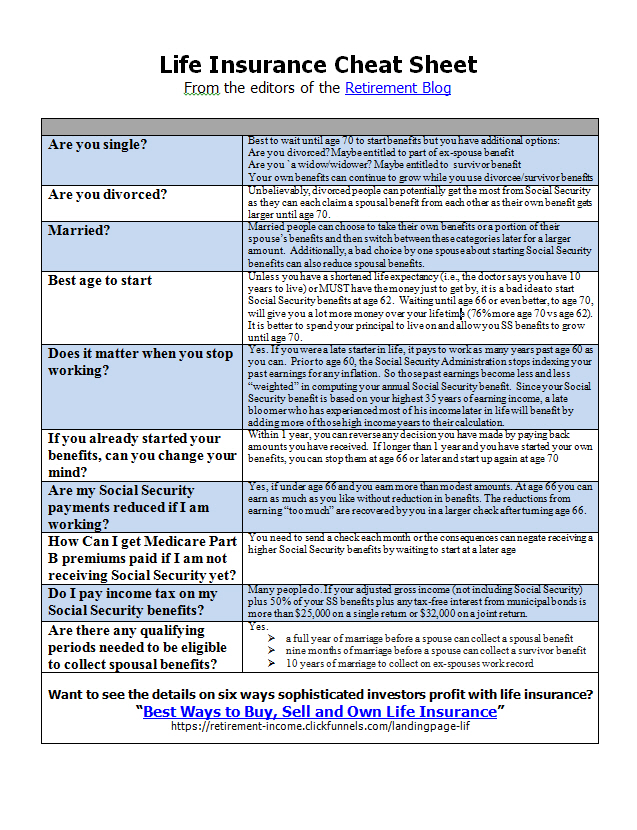In retirement you may want access to some or all of the cash surrender value of life insurance policies you own. What are some of the ways to get at it?
All cash-value life insurance policies include a "surrender right," which entitles you to give the policy back to the insurer for its current cash value if you suddenly need cash. If you surrender the policy, your current insurer cancels the insurance and sends you a check for its cash value.
You can find out the status of your policy. Just ask your agent or the insurer for a policy ledger and to show your status. He should give you a table illustrating your guaranteed cash value, estimated cash value, cash surrender value, and death benefit for the remaining years of the policy. Insurance companies send statements with this information to you each year on the anniversary of the policy.
In addition to surrendering the policy and having it cancelled, there are also options to keep the policy in force and get cash.When you retire, you can turn the built-up cash value of your life insurance into cash. A couple of ways are:
- You can withdraw your basis in the policy free of tax. The basis is the amount of premiums you paid less any withdrawals you've made.
- You can take a policy tax free loan. Loans are not generally taxable because they are an advance of the death benefit.
(Remember that taking cash from your policy will reduce or eliminate your death benefit).
You may want to terminate the policy altogether. Most cash-value policies offer three non-forfeiture options if you want to terminate your policy before maturity:
- You can receive the policy's cash surrender value in a lump sum, or
- You can use the lapsed policy to continue to provide death protection at the net rate for term insurance, or
- You can buy a paid-up term or cash-value policy for a reduced face amount using part of the cash surrender value of the policy and keep the rest for your use.
If you have life insurance held within an irrevocable life insurance trust you generally can't touch it. However, a family split-dollar arrangement can make the cash accessible by structuring the ownership of the life insurance policy so that the trust owns the insurance coverage and the trust-maker's spouse holds the investment component.
Ask an agent to review for you the options stated in this post.

Leave a Reply